Ecology of the Nakkan Swamp
A vibrant region of Emycelium, the Nakkan Swamp is packed full of life. This swampland is famous for its incredible amount of endemic species, many of which are unfortunately endangered. The waters of the Nakkan Swamp are mostly brackish, leaning more towards freshwater with little salinity. The soil is a blend of different mineral-rich soils, leaving room for massive plants and megafungi to grow.
Bird Life
The most diverse vertebrates in the swamps, birds are absolutely everywhere. They are classified into three major groups: land-based, aquatic, and sky. This classification was invented and is used by the Nakkan Wildlife Society for a simple understanding of the birds in this region.
The giant nakkan mangrove trees are inhabited by a number of bird species, such as nakkan mangrove cuckoos. These birds lay eggs in other bird's nests, such as red-throated warblers and nakkan tits.
The Nakkan Swamp is packed full of birds. Over twenty bird species are named after these swamps, endemic to this ecologically rich region. How many can you name?
Dave's flamingos gather in large flocks to disturb the quiet lakewaters where lily widdlers and nakkan herons hunt. The miniscule dusty moorhens and two-spot moorhens silently rustle through the thick reeds around the water's edge, while wattled seedsnipes squawk their way through the foliage. Dwarf rheas flatten down the thick grasses of the patches of land, ready for rambutans and salty kiwis to fluff them up to create tiny nests.
Shining starlings scatter round the skies, hunted by the dominant fuck-off kites. Nakkan fish eagles dive down to catch fish swimming in the swamps, rivalling giant darters that hunt from the lakebeds.
Guys look! It's a rufous-bellied booby! No, that's a maroon-bellied booby, you tit.
Squabbling in colonies atop giant mushrooms are rufous-bellied and maroon-bellied boobies. Fluffing up their feathers eating their feather mites are mitebiters. Flying in the silence of the nights are various crested owls, nocturnal predators.
Standing tall and proud in the giant grasses are fungibirds. These titanic avians reach over three metres in height, Living in and consuming giant mushrooms in the Nakkan Swamp.
More to come!
Salty Kiwi
Nakkan Peafowl
Nakkan Swampfowl
Shimmering Peafowl
Cold Water Goose
Cross Eyed Goose
Lampshade Goose
Plum Duck
Ruby Duck
Soft-Bellied Swan
Watershed Duck
White-Washed Duck
Grey Flamingo
Mushroom Flamingo
Nakkan Grebe
Ovil Grebe
Queen Pigeon
Short-Tailed Ground Dove
Treetop Pigeon
Yellow-Necked Black Pigeon
Cosmopolitan Cuckoo
Horned Malkoha
Jade Cuckoo
Nakkan Mangrove Cuckoo
Wet Cuckoo
Dusty Moorhen
Excessive Limpkin
Nakkan Crane
Raindance Sungrebe
Throat Warbler Crane
Two-Spotted Moorhen
Glossy Winged Tern
Inland Tern
Lily Widdler (Jacana)
Nakkan Seagull
Wattled Seedsnipe
Spearhead Loon
Rocky-Tailed Jabiru
White-Crested Stork
White-Necked Stork
Yellow Stork
Dwarf Hamerkop
Grand Ibis
Golden Ibis
Kitchen Table Bittern
Lesser Mycelial Pelican
Nakkan Giant Pelican
Nakkan Heron
Soft Night-Heron
Wild Shoebill
Fuck-off Kite
Nakkan Fish Eagle
Nakkan Wolf Hawk
Nonstop Screaming Vulture
Nutcracker Hawk
Particularly Large Secretary Bird
Silverbacked Vulture
Snail Eagle
Swamp Harrier
Green-Striped Owl
Grey-Crested Owl
Nakkan Swamp-Owl
Water Burrowing Owl
Whispering Falcon
Bellowing Cockatoo
Bold Fan Parrot
Nurturer’s Parakeet
Parakoot
Spectacled Nakkan Parrot
Taranan Pink Cockatoo
Thick-Billed Kea
Yellow Fan Parrot
Nakkan Tit
Red-Throated Warbler
Shining Starling
Mammalian Life
There is much less mammalian life than bird life, but it should not be underestimated. Many mammals in the Nakkan Swamp are key to the cycle of the ecosystems and habitat. White-Spotted and Nakkan Manatees consume the ever-growing seagrasses on the deep lakebeds, and their flat backs which remain on the surface at all times provide transport for giant capybaras too lazy to swim.
Steel-capped pangolins are an arboreal species, living in hollow trees in areas of dry land. They are not agile swimmers, unlike nakkan fishing cats, which are unique in that they hunt in the water. On the other hand, golden jungle cats prefer dense vegetation and flat low-lying trees.
Nakkan dwarf hippos share a similar purpose to the manatees, shearing down foliage, albeit on land. They protect running pencil deer from predators using their larger, more intimidating physiques, while the deer uncover delicious truffles for the hippos.
If you're going into the swamps with that boat, please be mindful of the manatees. They're lovely animals, but they don't quite understand how dangerous those boats are. Those propellors could slice a fin off, and they're a protected species.
Rummaging through the dense ground covering are tiny rodent species. They dig through giant mushrooms, forming complex home structures in their stems and caps. Endemic to the Diamond Valley, swamp kinkajous are a criticially endangered species in need of desperate protection. The Diamond Valley is also home to swamp raccoons of the same family, Procyonidae.
More to come!
White-Spotted Manatee
Nakkan Short-Tailed Shrew
Terranian Mole
Magian Pygmy Bat
Nakkan Pipistrelle Bat
Winter Bat
Wonky Fruit Bat
Golden Jungle Cat
Hip Weasel
Inland Seal
Mangrove Civet
Nakkan Fishing Cat
Persi Leopard
Rough-Backed Otter
Swamp Kinkajou
Swamp Raccoon
Nakkan Dwarf Hippo
Running Pencil Deer
Spiny Antelope
Sponti Deer
Nakkan Brown Rat
Soft-Nosed Mouse
Walten Ground Squirrel
Xanthic Leopard Mouse
Reptilian Life
It is difficult to go more than a few feet in the Nakkan Swamp without stepping on a reptilian. Shame, because many people have phobias of them. Nakkan crocodiles and banded whip vipers are synonymous with the swamps, both of which are endangered and have many conservation projects dedicated to increasing their numbers.
Ever been to CrocWorld? I have mixed feelings. I loved what they were doing, they were trying to increase the nakkan crocodile population. The atmosphere was off though. Something didn't feel right, I couldn't place it. It didn't feel authentic. I'll have to do some investigating...
Wear a hat in the Nakkan Swamp. Atlas beasts, painted iguanas, yellow basilisks, and gold pythons like to rest in the canopies above, and on occasion they drop down to the ground. Cloud anoles are an unusually aggressive species despite their tiny size of less than five centimetres in length. They feed on large gatherings of insects in dark, damp spaces.
Huddling together with the two booby species are puddle-cap and softshell terrapins, two arboreal terrapin species. They live in the large puddles that form in flooded concaving mushroom caps.
More to come!
Nakkan Leatherback
Puddle Cap Terrapin
Softshell Terrapin
Toron Big-Headed Turtle
Black-And-White Gecko
Cloud Anole
Dash Gecko
Lace-Backed Skink
Nakkan Monitor
Ophiucid Iguana
Painted Iguana
Primitive Lizard
Sunkissed Stingtail
Variegated Skink
Yellow Basilisk
Brick Red Whip Viper
Miniconda
Mushroom-Eating Pit Viper
Gold Python
Nakkan Pygmy Viper
Swamp Rattlesnake
Nakkan Crocodile
True Gharial
Fish Life
Vital to the aquatic ecosystems of the Nakkan Swamp, fish are often the primary consumers in these food webs. Some fish in the Nakkan Swamp live in saltwater, but migrate here to breed, such as spicy salmon. Many primitive fish species, such as nakkanacanthus and wheneti live in deeper swamp waters along the swampbeds.
Some even possess the ability to travel onto land, some capable of climbing up trees. A few species such as puddle tetras make their homes in the water-filled concave mushrooms.
More coming soon!
Bubble Shark
Fungal Feeder Shark
Swamptail Ray
Thunder Ray
White Whiptail Ray
Wheneti
Banded Grey Gar
Banded White Gar
Coin Tetra
Nakkan Dwarf Catfish
Nakkan Giant Catfish
Nickle Minnow
Puddle Tetra
Spicy Salmon
Wessan Sturgeon
Plant Life
No location is without plant life. It is often massively overlooked by the average person, but within the Nakkan Swamp, this ignorance is impossible. Nakkan mangroves grow in dense clusters, with their pole-like roots sticking up in a ring around their trunks, creating protected homes for a number of species. Sparkle moss and lily widdler vines are two of over thirty other epiphytes that grow on these mangroves.
Many plant species have seeds that flow in stronger winds, passing into new areas of the Shroom Swamps. Some rely on animals to transport their seeds, either by being consumed or clinging to their bodies and dropping off after a while.
There are countless water lilies, lotuses, duckweeds, and other aquatic surface plants that cover the lakes in thick layers of foliage.Stella stumbled as she stepped out of her starship. "Darn plants on the ground," she muttered as her feet barely escaped a small tangled mass of vines. Between the vast stretches of open water and the dense patches of forest, parking her ship was a painful task. Stella heard from a number of radio stations that the people of Emycelium are quite protective of their plants and animals, so she was careful not to harm anything when she landed.
That proved a difficult task, however, because the foliage was so thick Stella could barely make her way through it. If the thick grasses weren't enough of a struggle, duckweeds so dense that they appear as solid ground tricked Stella, and she plummeted head-first into a patch of muddy water.
More to come!
Common AicieaDiamond Thistle
Nakkan Beech
Nakkan Mangrove
Sodden Aiciea
Transparent Mangrove
More to come!
BrushflowerCommon Tailflower
Giant Tailflower
Nakkan Orchid
Silver Tailflower
Toucan Lotus
Yneman Tailflower
Zoan Xiphicti
Mushroom Life
The most iconic lifeforms of the whole planet, without fungi, the Nakkan Swamp would fall.
Powderspore
Powderspores, as their name would suggest, produce spores in the form of a thick, stodgy powder. This powder can be eaten, and tastes lovely as a spice, used in fried mushroom recipes. Powderspores can be a nuisance in large quantities, as the spores make breathing difficult.
Geographic Distribution
Dampened Rainforest • Gilded Rainforest • Nakkan Swamp
Common Colours
Many fungi species have innate relations to certain magic types, often hydromancy. Giant mushrooms are commonplace, with watershedding sweatcaps largely responsible for the flow of water, recycling it and fighting waterborne diseases.
Many smaller mushroom species are epiphytic, forming mutualistic relationships through recycling energy between both organisms. Fungi make up the diets of many species, many you might not expect. A handful of snake and shark species consume fungi on a daily basis.
And here we have the dwarf hippo, rummaging around in the dense foliage. She is accompanied by the tiny running pencil deer, no more than twenty centimetres tall. They share a fascinating relationship. The dwarf hippo may not be very large, but it is certainly larger than the deer, who knows this. She provides protection for the deer, while the deer finds the hippo's favourite food hidden underground, beneath the grass. Truffles. Together, they form the ultimate team in the Nakkan Swamp, both benefitting from their mutualistic relationship.
Collect a sticker!
While exploring the swamp, you notice a small market stall selling Emycelium stickers. Better add one to Your Stickerbook! Click to collect sticker: Emycelium492 bird species
73 mammal species
92 reptile species
78 amphibian species
148 fish species
247 arachnid species
840 insect species
29 crustacean species
13 mollusc species
63 tree species
128 flowering plant species
18 grass species
204 fungi species
5 fern species
Related Locations
Emycelium
Nakkan Swamp
Shroom Swamps
Related Species
Nakkan Crocodile
Nakkan Mangrove Tree




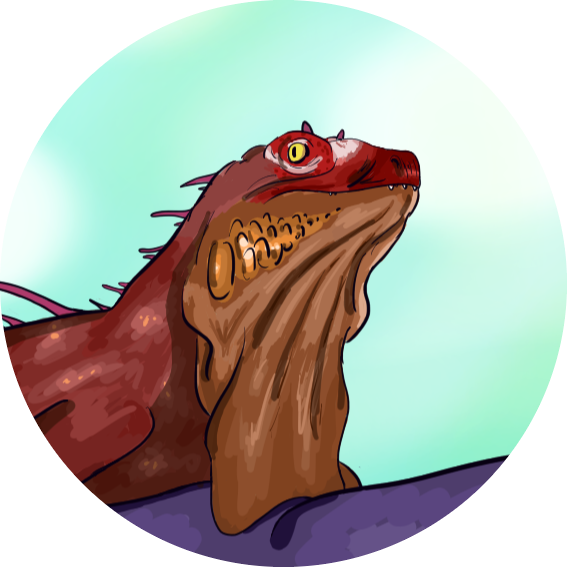
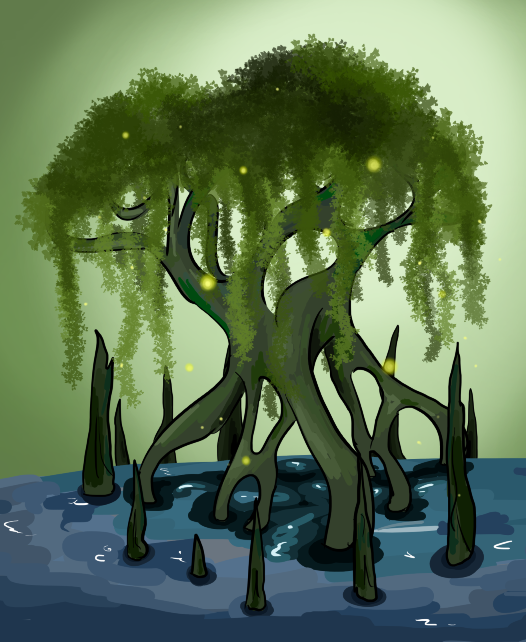






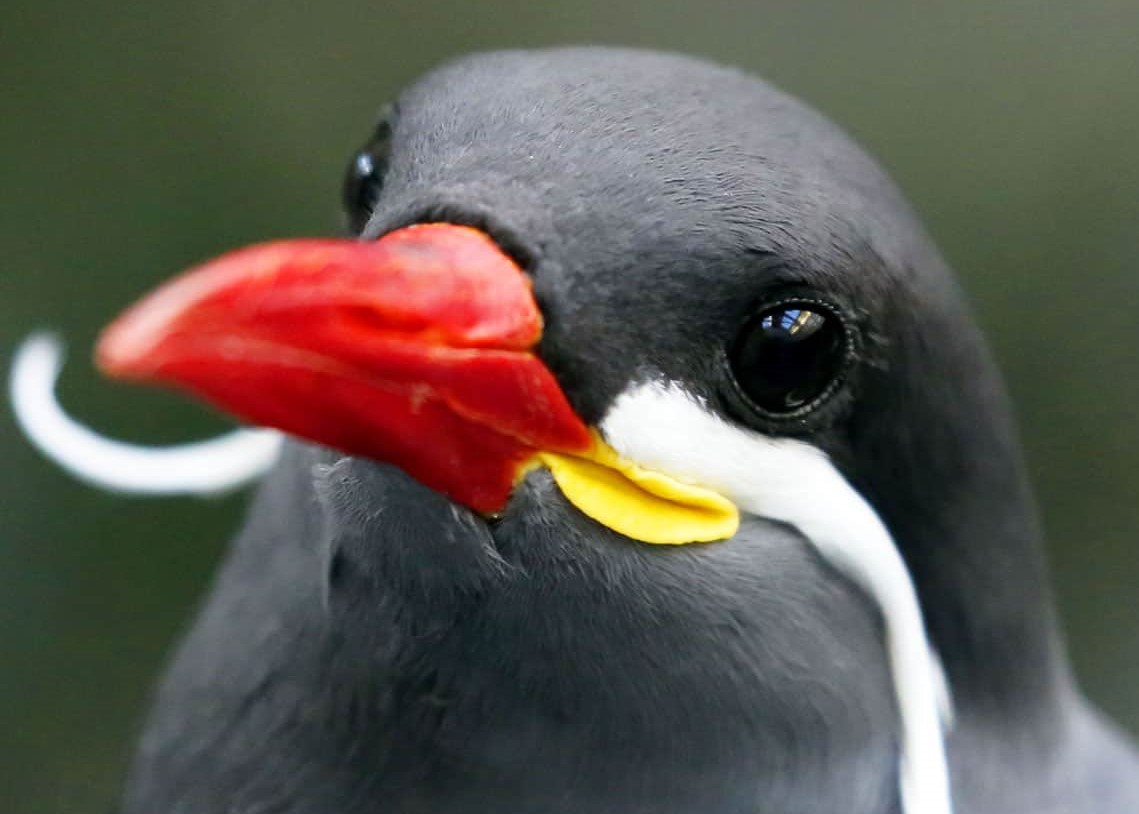


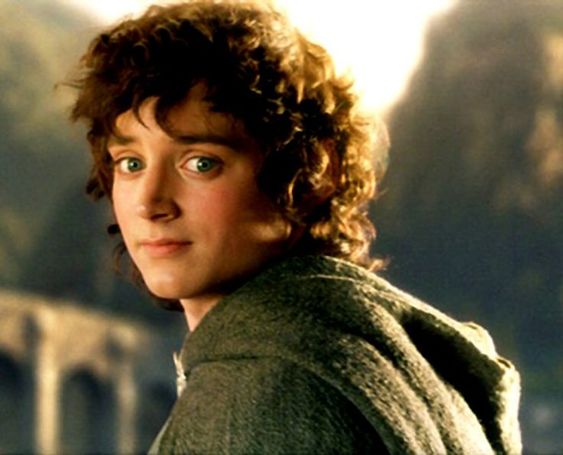

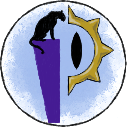


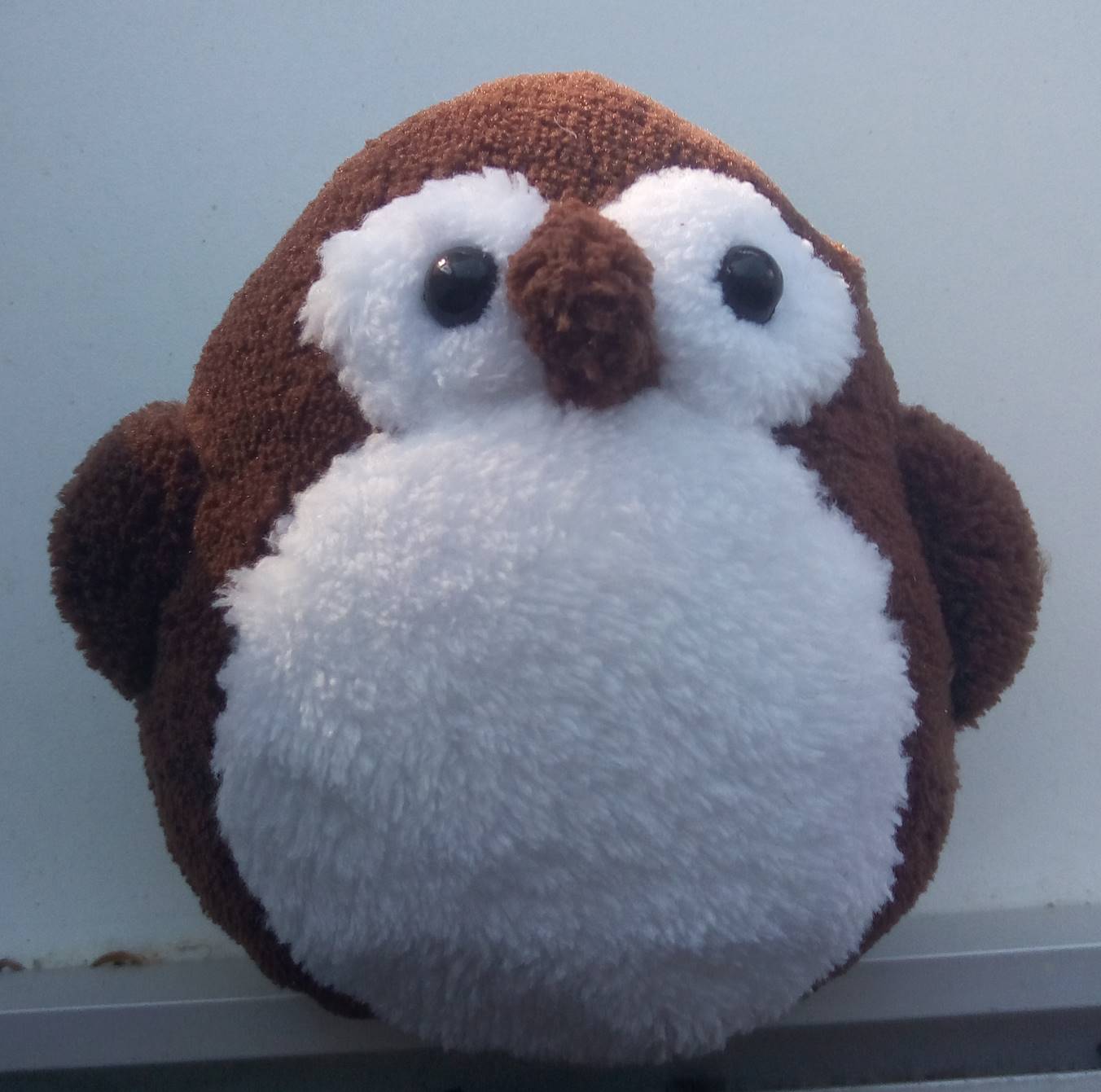

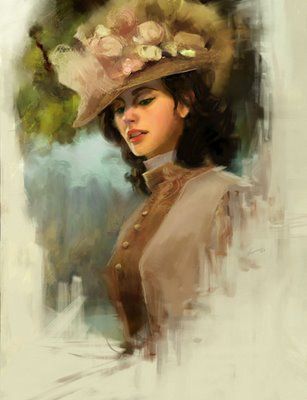
Incredible work. I giggled at some of the names; ***-off kites are my favorite of those, and I have a definite idea of their behavior from the name alone!
Thank you so much! hehe, I had fun with naming some of the birds xD